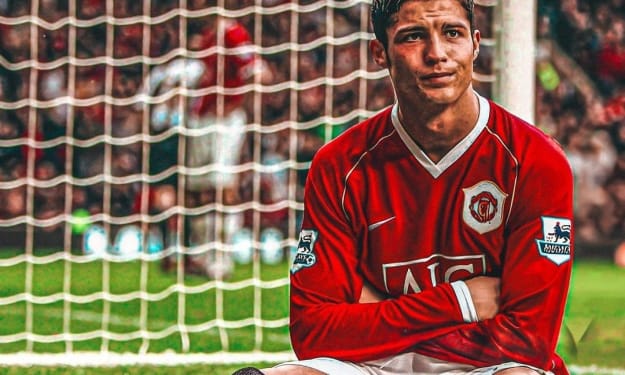Italian Soccer has declined over the last 20 years, but this crisis may help the country become more competitive
Italian soccer is in decline but it is benefitting from international investment particularly from the US and probably more investment are coming from Saudi Arabia

Throughout the 80s and 90s, Italy’s Serie A was the soccer league of reference. It had the best teams, players, coaches and frequently held the world transfer record. Additionally, Italian teams were tough competitors at European level. Between 1952 and 1992, there were only four years when Serie A didn't have the most expensive players. However, over the last 20 years, Italian soccer has lost its lustre driven by revenue decline, corruption and increase cost. Its appeal and international glamour continue to decline, and unsustainable finance, and nepotistic governance practices have drained the league of many of its global stars, brands and trophies. The once-mighty sport seems to be affected by a general lack of innovation, international finance, and new leadership. Just to add a reference point here, some of the Serie A Team’s revenues today are lower that they were 10 years ago, Fiorentina being a good case in point which in 2020 generated 72 million Euros in revenues. Serie A is now the No. 4 ranked league in Europe and the Italian national team has also fallen to 11th in the top 25 rankings having not participated to the last world cup as it did not qualify. On the infrastructure side, over the last ten years, only three new stadiums have been built in Italy, compared with 153 in Europe overall. This was mostly due to lacking financial resources. The current system is not working, and If Italian soccer wants to climb back to its former glory days, it needs to be transformed.
Partnership with Private Equity Firms
Italian soccer no longer has the financial resources to compete with English, Spanish, and even with French leagues. Unlike other European clubs, Italian soccer teams don't own their stadiums for instance. Additionally, as the Italian league continues, the Serie A does not have the products, services and the attractive innovations to chase substantial TV deals. The league is crying out for investment and new leadership. While things are starting to change, over the last 20 years, Italy largely missed out on the waves of investment that have bolstered European football. Russian oligarchs (Chelsea), Saudi, Qatar and United Arab Emirates Sovereign Wealth Funds (Manchester City, PSG and Newcastle) have altered the European soccer landscape entirely. However, there are still plenty of opportunities out there.
Recently, the English club Newcastle was acquired by Saudi Public Investment Fund (PIF). Saudi, Qatar, UAE and US investors could provide the Italian league with much-needed 21st century financial structure and capabilities to become more competitive and lucrative. An example of innovative partnership, is Spain's La Liga recent partnership agreement with CVC Capital Partners to sponsor the entire league via an investment of US$ 3.2 billion. A similar effort was tried in Italy, but it failed to go through. To make things worse, the Covid pandemic and the consequent closure of stadiums drove many Italian clubs to the brink of collapse. Because of this decline and record low financial valuations, US Private equity groups got more involved with the Italian family-owned teams. A good recent article of the Financial Times talks more about how foreign investment is coming to Italian soccer.
United States Private Equity is the Name of the Game
Due to a combination of old-style management, and poor financial performance, and no innovation, most Italian soccer teams are significantly undervalued from a financial standpoint. For this reason, over the last 3-5 years there have been an exponential growth in interest towards Italian soccer teams from US Private Equity and Hedge Funds. These are investors that believe that better management and stabilized finances can lead Italian soccer back to glory and grow their valuation significantly over the next 5 to 10 years. As of today, of the 20 Serie A soccer teams, 6 are controlled by North American investors. What made these acquisitions particularly attractive was the general underperformance of these teams, their attractive brand equity, and the overall unique standing of soccer in Italy which has no competing sports whatsoever. Here is a snapshot provided by Forbes Magazine on the status of US PE ownership in the Italian soccer space.
Here below are a few areas of focus which I believe could help Italy bounce back to much more competitive level:
Smart Data and Innovation
The biggest Italian soccer teams, like Juventus, AC Milan, Napoli, Inter, Lazio and Roma, should be at the forefront of soccer technology. Over the last few decades, data science has exploded in soccer, with teams across Germany, Spain, and England embracing football big data analytics to gain a competitive edge. Clubs such as Germany's Borussia Dortmund and the Premier League's Brentford use data to improve training, players performance, match analysis, and drive recruitment. Others are using biohacking and neuroscience to ensure sustained players performance. These club's investment in innovation, technology, and smart data has allowed them to punch above their weight significantly. Conversely, new technology testing in Italian soccer has barely happened as the ruling powers in Italian soccer are unable to get out of an old mindset and unable to adapt to current market conditions and new trends.
Promote new way to consume soccer via Internet and Augmented Reality: Over-the-top media service (OTT) broadcasting is the future for soccer as it provides media service directly to consumers bypassing all other media planforms such as cable, satellite, and broadcast. During the COVID-19 lockdowns, many European clubs successfully experimented with direct-to-fan subscription services with outstanding results. Italian clubs should follow this trend and focus on non-traditional avenues to sell their product via innovative technologies, since the way fans watch the game is changing and evolving. Furthermore, with the cost effectiveness of virtual and augmented reality offerings, Italian teams could launch metaverse-soccer platforms where augmented reality, videogames, sport, and Non-Fungible Token (NFT) can interact to create advanced digital experiences. This is not rocket science anymore, and several EU soccer teams are exploring the “Tokenization of their Assets”, allowing their fans to invest in their favorites teams via crypto, whereby the users became shareholders. These are new revenue streams worth exploring as they can help monetize both domestic and international fans.
Women's Game
While most people are still not very familiar with women soccer, everyone should pay attention, as this is finally a powerful emerging business trend. This trend is led by the US and Scandinavian women soccer leadership. As a result, several top EU teams, including Spain's Real Madrid finally established a women's team in 2020 In Italy, women soccer is growing, and women’s Serie A should seize the good momentum, piggyback on the Italian soccer global brand, to capture a piece of this emerging market. Italy has the football infrastructure and expertise to play a much larger role in international women soccer. With better marketing and investment, and some risk taking, Italian women’s teams could become a global force and help Italian soccer get back to its glorious past.
Target Partnership with the United States
Italian football needs to aggressively cultivate partnerships with the United States to attract new, smart investors as well as position itself as the go to market and partner for anything within soccer. This process would open the league to new investment, product development and ownership. Additionally, it could give Serie A access to much-needed global management and business skills while promoting innovation and exchange of players across the two markets. This would also benefit Italy as the US, together with Canada and Mexico prepares to host the FIFA World Cup in 2026.
Conclusions
Serie A’s weak leadership and overall shortage of investment has caused Italian football to decline. It’s time for the Serie A league and its clubs to take risk and explore new ways to return to the top. Partnership with private equity funds, is a good start as it could give the sector the cash injection and international management standards it needs to dismantle its obsolete ownership, operation structures and investment strategies. Ultimately, I believe the recent crisis of Italian soccer is the perfect storm to embrace new technologies and bring Italian soccer to a much more needed competitive and innovative levels. An overall level of humility in the Italian leadership would help, and Italy, which as I write this article is risking not to qualify for the Qatar 2022 World Cup (this would be the second miss in a row), should learn from Spain and the UK who have managed to challenge old system, brought in a lot of positive changes, and become the most competitive leagues in the World.
About the Creator
Andrea Zanon
Andrea Zanon is an international sustainable development and empowerment specialist who has dedicated his life to reducing poverty, promoting sustainability and empowering ambitious people






Comments
There are no comments for this story
Be the first to respond and start the conversation.